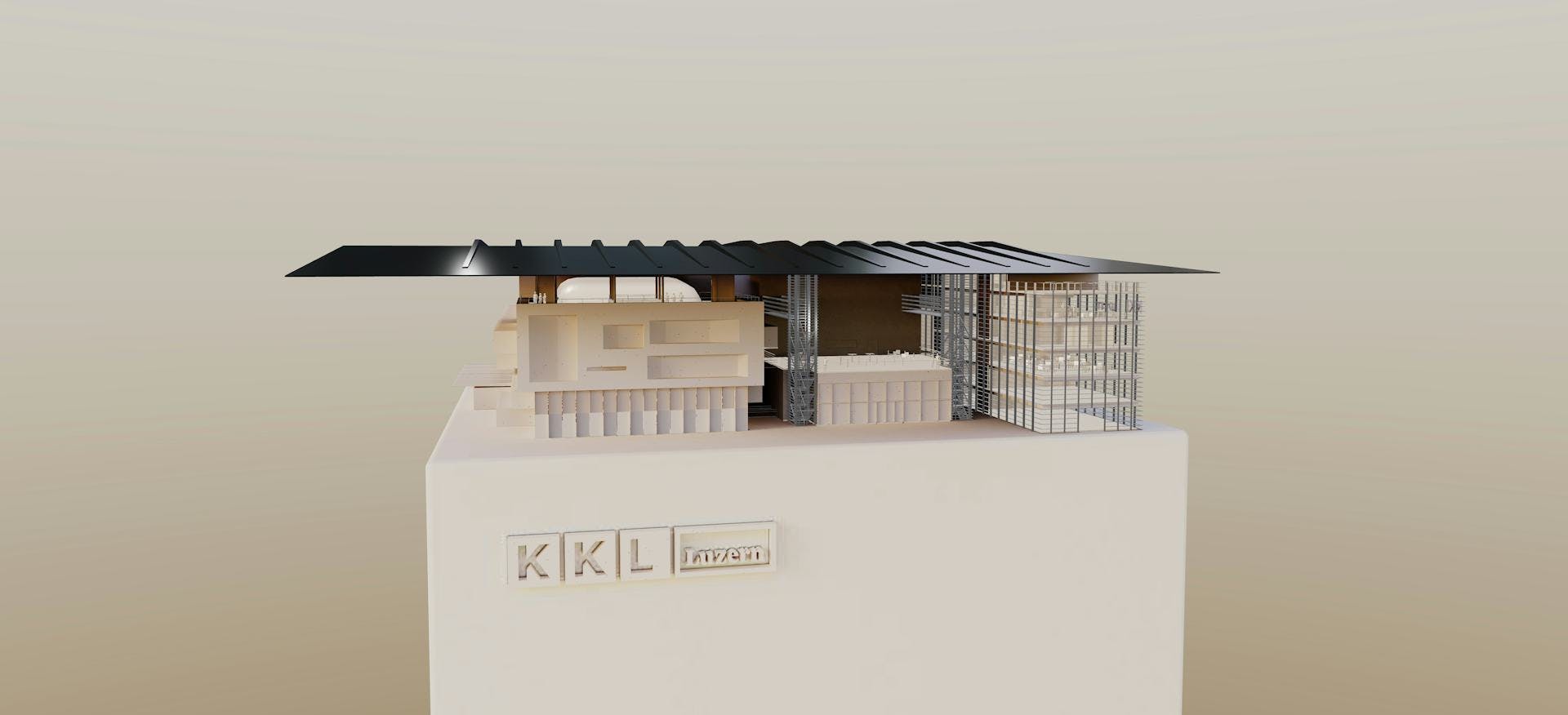


| With its unique architecture and acoustics, KKL Luzern is a symbol of the city of Lucerne today. Behind these two key elements are the French architect Jean Nouvel and the American acoustician Russel Johnson. |
The national referendum on the construction of the lakeside culture and convention centre took place in 1994, with 65.7 per cent voting in favour of the project.This cleared the way for the building conceived by Jean Nouvel and Russel Johnson. The ground-breaking ceremony took place in 1996, and the Concert Hall’s grand opening with the Luzerner Sinfonieorchester (Lucerne Symphony Orchestra, LSO), the Lucerne Trumpet Ensemble, and then-President Flavio Cotti was held on 18 August 1998.
The entire Lucerne Culture and Convention Centre and the Kunstmuseum Luzern (Lucerne Art Museum) opened two years later. On 19 August, the conductor Claudio Abbado and the Berlin Philharmonic Orchestra performed at the opening concert of the International Music Festival (known today as the Lucerne Festival).
Designed by French architect Jean Nouvel, KKL Luzern was constructed according to his plans between 1995 and 2000. A ship-like construction on the lake was originally planned but not possible due to urban planning and environmental reasons. With an emphasis on “inclusion”, Jean Nouvel combines indoors and outdoors by means of canals that bring water into the building and a roof that reaches out over the lake. Another element is the “reflection” created by the materials used. The lake, for example, is reflected in the roof, and the views and impressions of the building change depending on the angle and the way the light falls.
The two canals divide the building into three independent sections lined up like ships in a wharf: the Concert Hall wing, the Lucerne Hall wing, and the restaurant and Kunstmuseum wing.
| The New Yorker Russel Johnson (1924-2007) was considered the leading acoustician of all time. Nevertheless, KKL Luzern was a milestone for him as it encapsulated everything he had accomplished in his work. The Concert Hall, for example, achieves the ideal acoustics with a 1:1:2 ratio of ceiling height, width, and length. In addition, the 24,000 plaster reliefs break up the reflection of sound, multiply it, and scatter it in all directions. The echo chambers can be used to increase the hall’s volume of 19,000 cubic metres by another 6,000 cubic metres, thereby modifying the sound. Another acoustic element is the canopy above the stage, which serves as a sound reflector and allows the musicians to hear themselves without a delay in sound. The Concert Hall itself, moreover, is perfectly silent. The noise level is 18 decibels, which is not audible for the human ear. This feature makes it possible to experience the music in all its dimensions, from the softest pianissimo to a deafening fortissimo. |




- Jean Nouvel, 12 September 2015, Architect of the KKL Lucerne